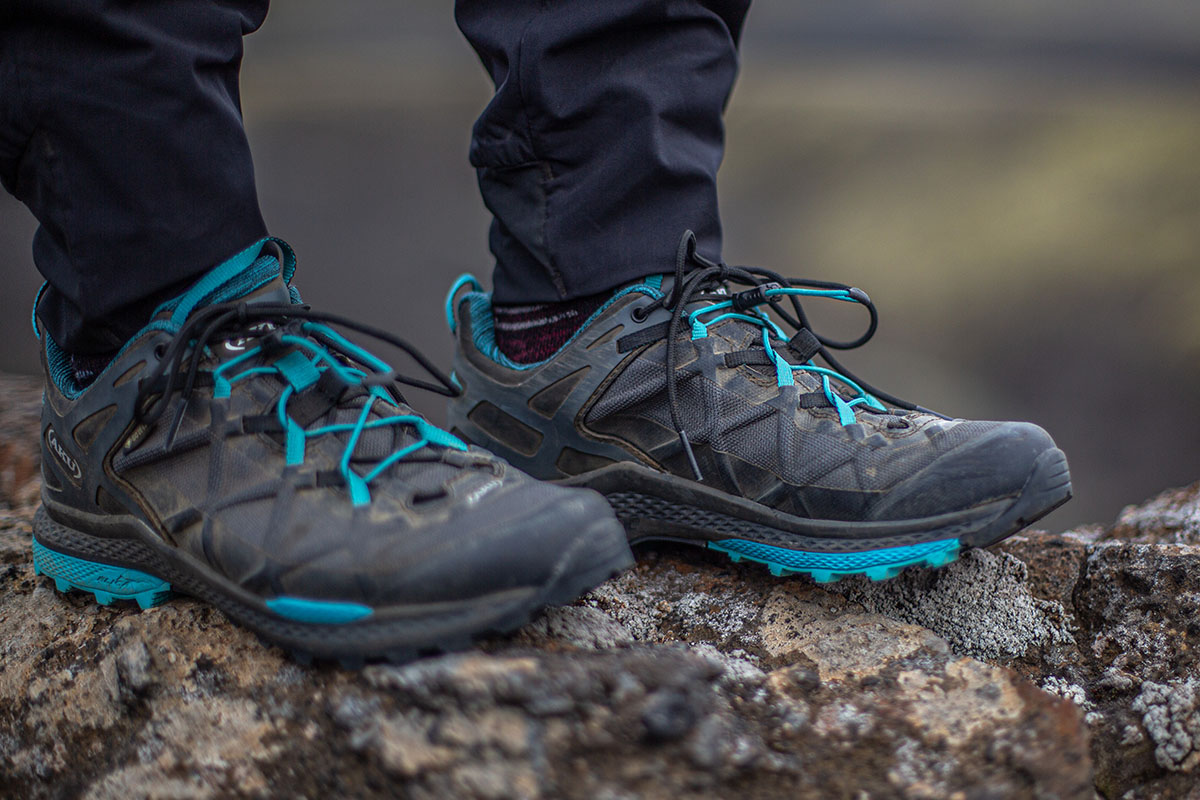
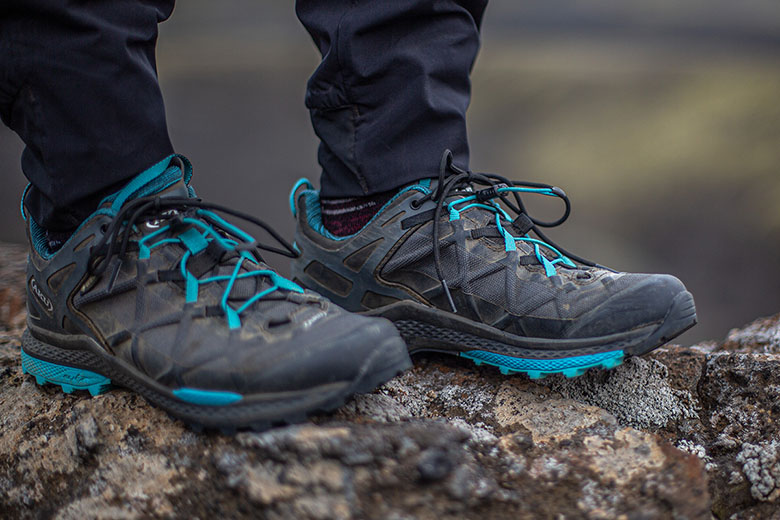
Price: $190
Weight: 1 lb. 5.9 oz. (women’s)
Waterproof: Yes (Gore-Tex)
What we like: Standout durability, protection, and traction in a light and agile package.
What we don’t: Expensive, stiff collar, and runs warmer than most competitors.
See the Women's AKU Rocket DFS GTX See the Men's AKU Rocket DFS GTX
Aku is an Italian footwear brand with a wide selection of technical, mountain-ready designs, and they've recently entered the fast-and-light space. The Rocket is arguably their most versatile lightweight hiker, and we put the women’s low-top model to the test in British Columbia and on Iceland’s iconic and challenging Laugavegur Trail. All told, we came away highly impressed by the shoes’ well-rounded build, including standout grip, solid durability and protection for the weight, and a nimble and energetic feel. The Rocket isn’t the cheapest or most breathable design, but it’s a capable pick for everything from fast-paced day hikes to longer overnight missions. Below we break down our experiences with the Rocket DFS GTX. To see how it stacks up to the competition, see our articles on the best hiking shoes and best women’s hiking shoes.
Out of the box, the Aku Rocket DFS GTX was impressively comfortable with a foot-hugging shape and just-right fit. Before trusting them on a multi-day backpack in Iceland, I took the shoes on a several-hour hike on Vancouver Island and was immediately struck by the effective balance of cushion and support. There’s adequate room in the toe box to accommodate my wide forefoot, and the Rocket allowed for a very natural gait with no unwanted movement inside the shoes—I’ve experienced no slipping or hotspots throughout testing. Though lightweight, the Rocket also deftly fended off direct hits to rocks and kept my foot protected when wedged between boulders. Finally, the DFS (Dual Fit System) makes it easy to dial in fit with two sets of laces for customizing tightness throughout the entire foot (more on this below).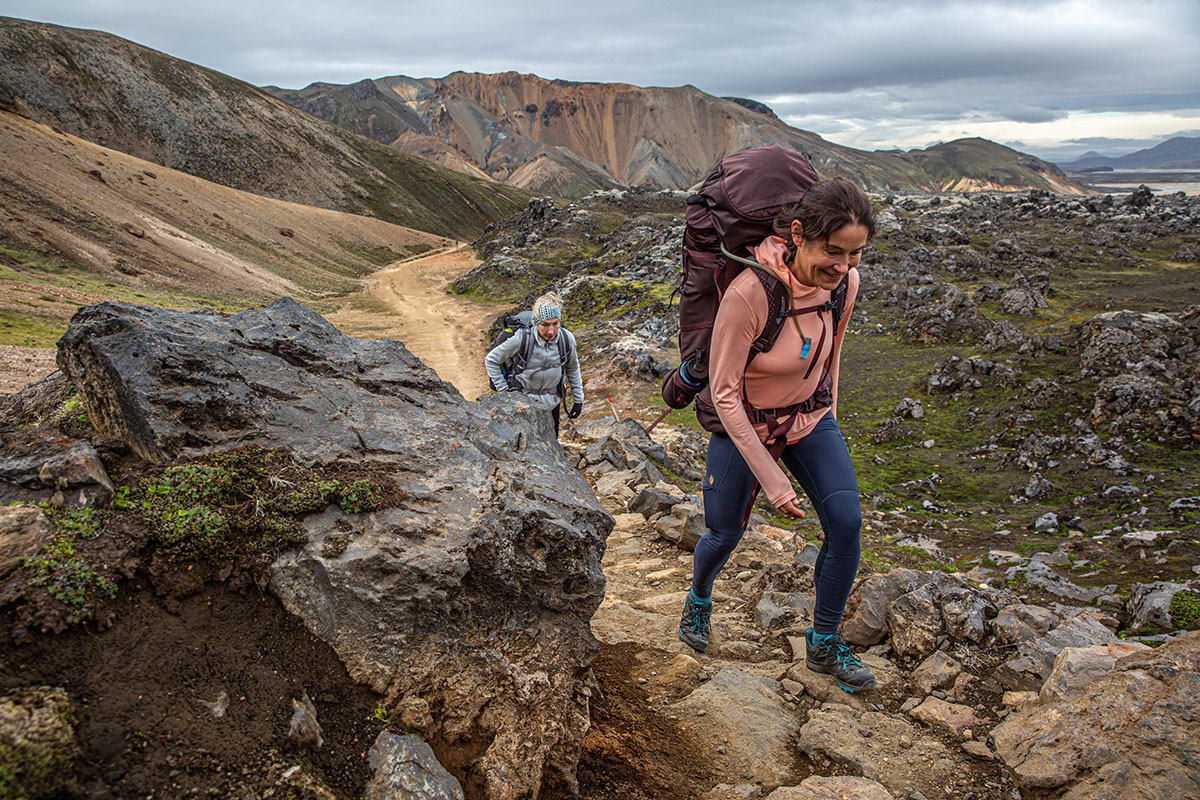
One contributor to the shoes’ natural feel is Aku’s Elica Natural Stride System, which integrates the shoes’ last, insole, midsole, and outsole. In theory, this is designed to increase stability and distribute weight more evenly across the entire sole—ideally reducing fatigue and hotspots and encouraging a natural gait. While hard to gauge the overall efficacy of the technology, the shoes allowed for a normal stride with ample flexibility even on steep slopes. Along with the dual-density polyurethane midsole, which comprises a soft layer for cushioning under the heel and toe and a more rigid layer in the middle for support and stability, the Rocket has been a capable and comfortable companion on everything from easy day hikes to multi-night missions with a loaded backpacking pack.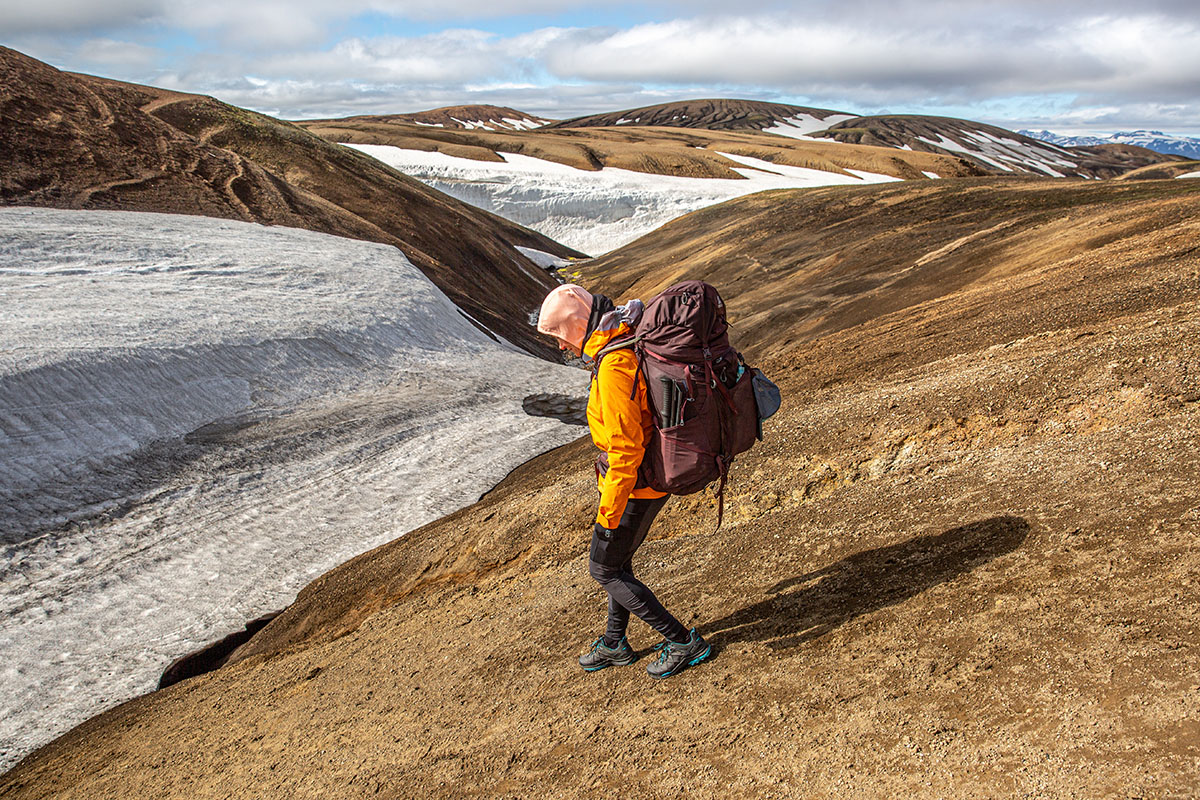
All that said, I did come away with a couple of comfort-related complaints. First, I found the cuff to be fairly stiff and prone to digging in at the inside of my ankle, especially on off-camber sections of trail. This was especially noticeable during my first two days wearing the shoes, but my ankles eventually became used to the pressure. I don’t feel that the cuffs have softened at all, even after putting on considerable mileage, but they thankfully haven’t caused any hotspots. My second issue is that the Rockets run pretty warm. This wasn’t a huge concern in Iceland where temperatures typically ranged from around freezing to low 50s Fahrenheit, but it was readily apparent while hiking in British Columbia, where temps reached into the mid to upper 80s. Opting for a lighter colorway might have helped a bit, but those who spend considerable time in warm and dry environments (like the Utah desert) should consider a non-waterproof design instead (more in “Waterproofing and Breathability” below).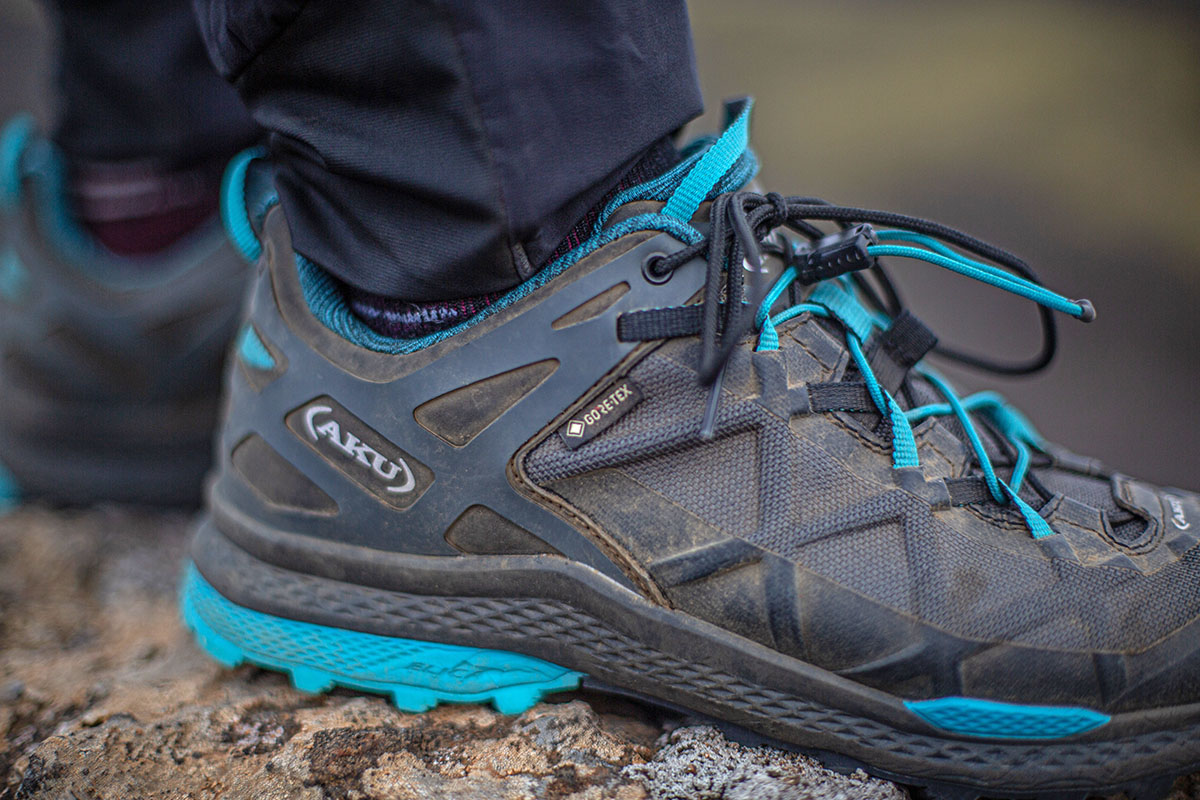
At 1 pound 5.9 ounces per pair for the women’s version (my size 9 pair checked in 3.5 oz. more at 1 lb. 9.4 oz.), the Rocket DFS GTX is competitively light given its levels of durability and protection. For comparison, most similarly capable hiking shoes check in heavier, including the La Sportiva Spire GTX (1 lb. 10.2 oz.), Salomon X Ultra 4 GTX (1 lb. 6.1 oz.), and Scarpa Rush 2 GTX (1 lb. 6.2 oz.). You can shave some weight by opting for a trail runner like Hoka’s Speedgoat 5 (1 lb. 1 oz.) or Altra’s Lone Peak 7 (1 lb. 2.4 oz.), but those shoes make sizable compromises in support, stability, protection and longevity. Overall, the Rocket felt light and nimble underfoot, and I had no complaints when moving quickly on the trail.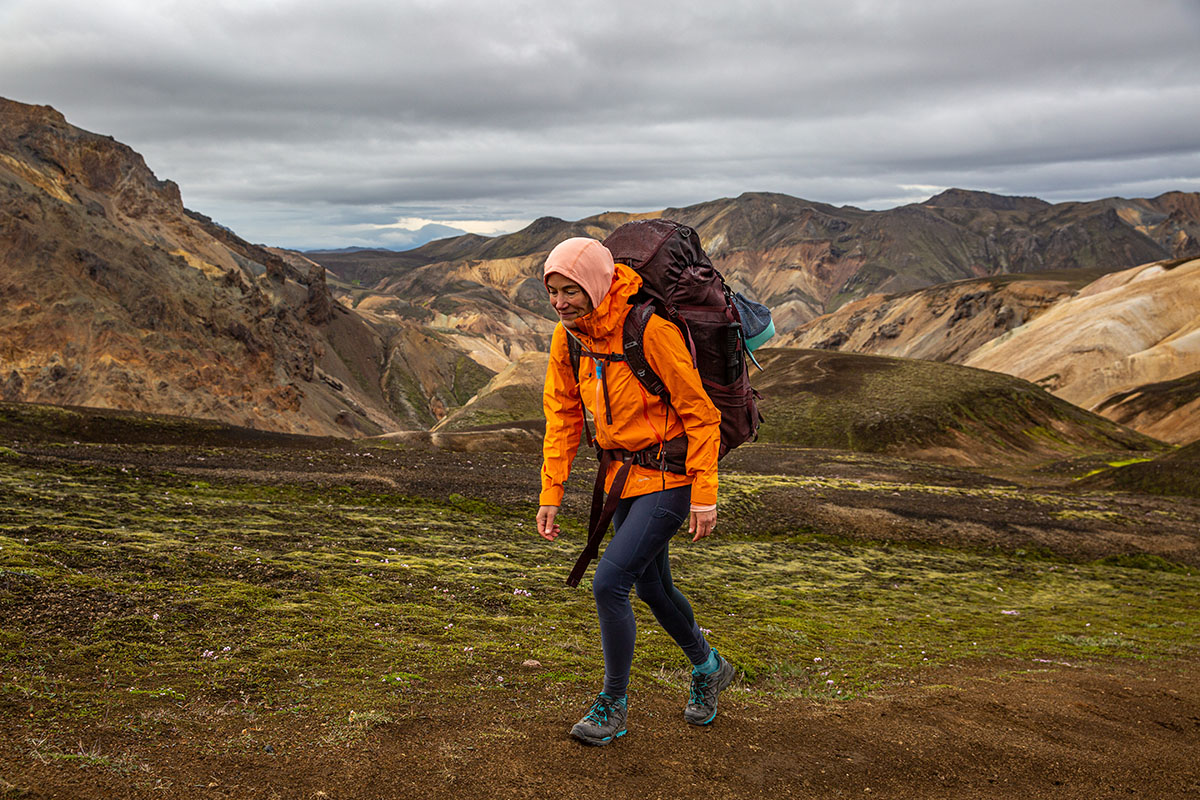
The Rocket DFS GTX boasts Vibram’s new Traction Lug outsole, which proved to be incredibly grippy over a wide variety of surfaces. In place of standard lugs, the innovative design uses “stepped” lugs—essentially small lugs stacked on top of bigger ones—to maximize contact with the ground. The front and back of the outsole also feature additional rubber to maximize grip while scrambling (similar to their Rock DFS approach shoe). While difficult to quantify, the boost in traction was noticeable during testing—the Rocket handled steep slopes rife with everything from loose dust to marble-sized rocks, mud, and even snow with no slippage. In fact, I’d go so far as to say that the Rocket is the grippiest hiking shoe I’ve worn to date.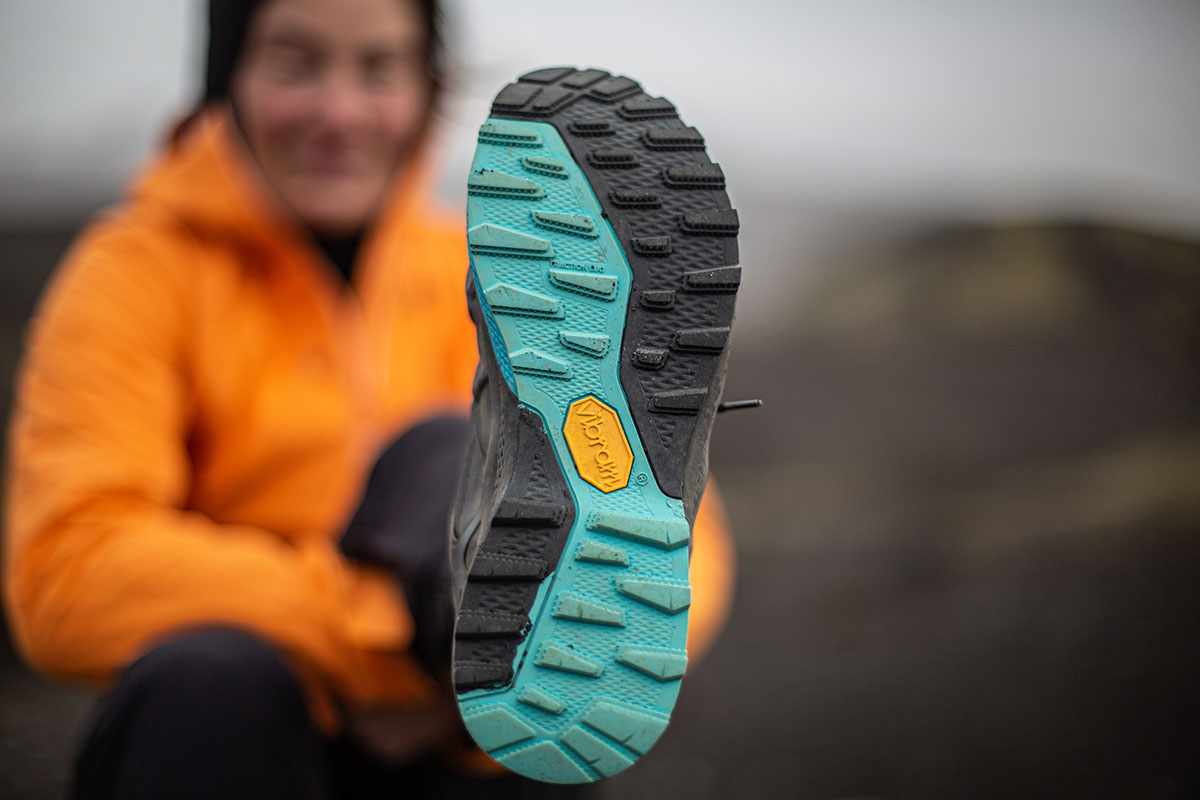
The Aku Rocket DFS GTX is aptly named with a fast-moving personality and great responsiveness—it feels more like a running shoe than a traditional hiker. The snug fit minimizes slippage inside the shoe, the grippy outsole inspires confidence when navigating tricky terrain, and the Elica Natural Stride System mentioned above increases energy transfer by helping propel the foot forward with each step—you get deeper lugs at the front for push-off, along with a slightly rockered heel and thick cushioning where the foot lands. We had to hop across rocks several times to cross creeks and rivers in Iceland, and the Rockets gave me a lot of confidence. They were also agile enough for short bursts of running, allowing me to quickly catch up to the rest of the group after stopping for bathroom breaks or snapping photos. 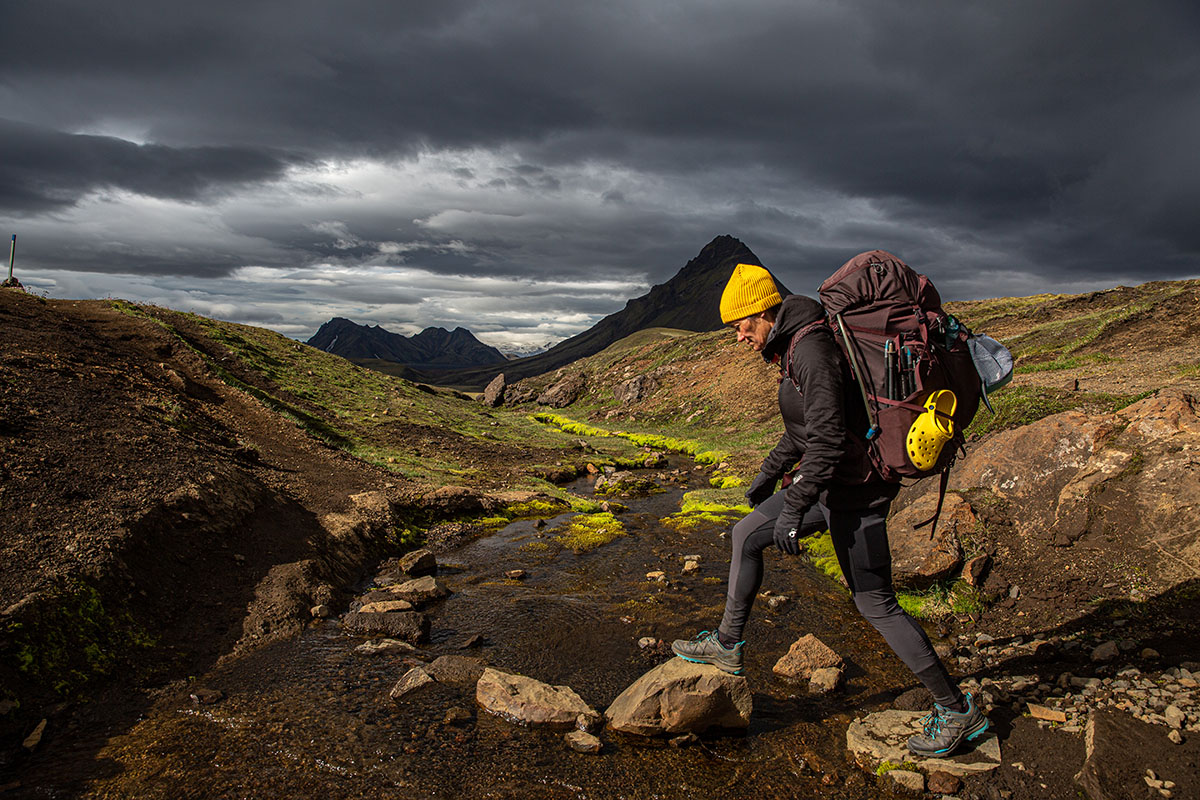
The “DFS” in the Rocket’s name is short for Dual Fit System, which comprises two sets of laces to maximize customization. It took me some time to warm up to the idea—and messy look—of the double-lace design, but I’ve come to appreciate the ability to really fine-tune fit. The system is fairly straightforward: The darker laces secure the midfoot (like most traditional lacing designs), while the colored laces (blue on my pair) are a single-pull design—similar to Salomon’s Quicklaces—to lock in the forefoot. It’s worth noting that there’s a good amount of overlap between the two sets of laces in the low-top version that I tested, while the standard laces on the mid-height version extend all the way up the taller collar, resulting in less redundancy between the two systems. In other words, there’s a greater level of customization with the boots, but I nevertheless appreciate the ability to make small adjustments with the low-top shoe.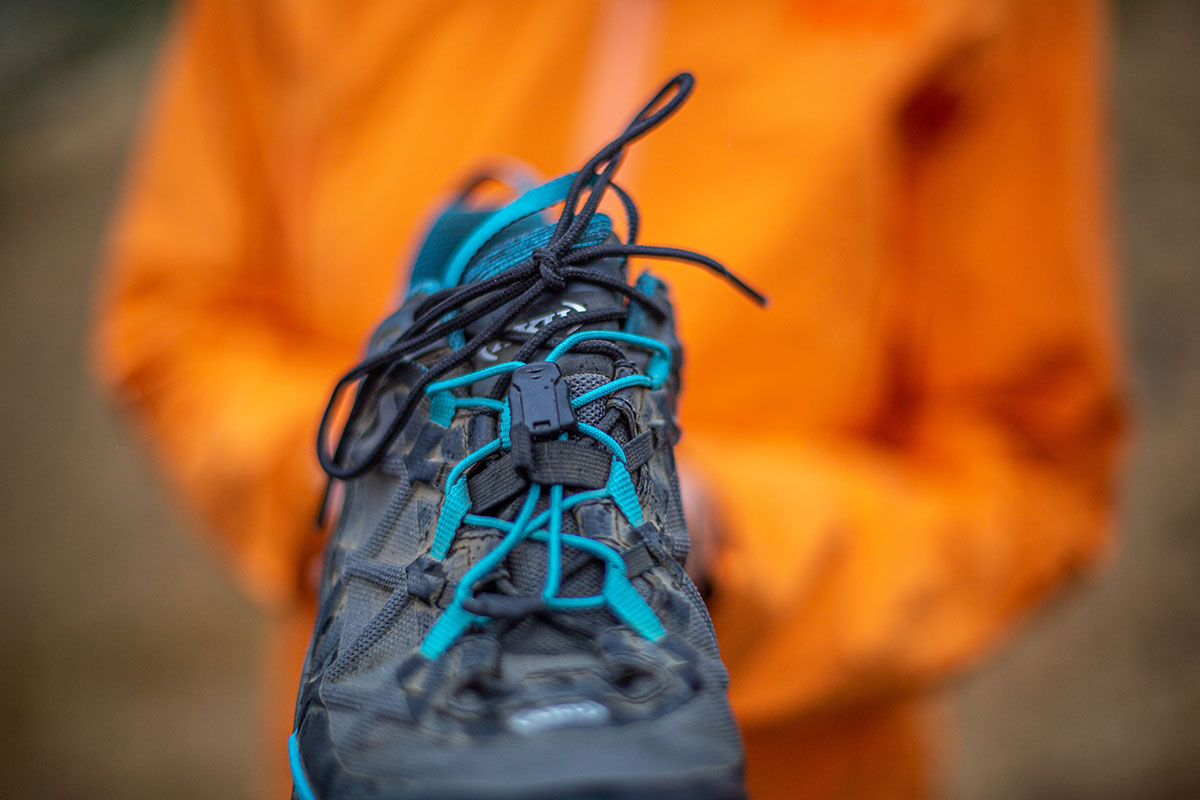
The Rocket has a noticeably stiffer and more supportive feel than most trail running shoes, which was a boon when carrying a full backpacking pack. The Elica Natural Stride System outlined above is a big help, allowing for a natural gait and an even distribution of pressure during each stride, while the dual laces help dial in fit and lock down the entire foot. Even with a heavy pack that contained overnight gear plus four days’ worth of food for two people, I felt completely stable on the challenging and uneven ground that we encountered in Iceland. Those prone to rolling ankles may want to step up to the mid-height version for $30 more, but I had no issues with the low-top despite the technical terrain.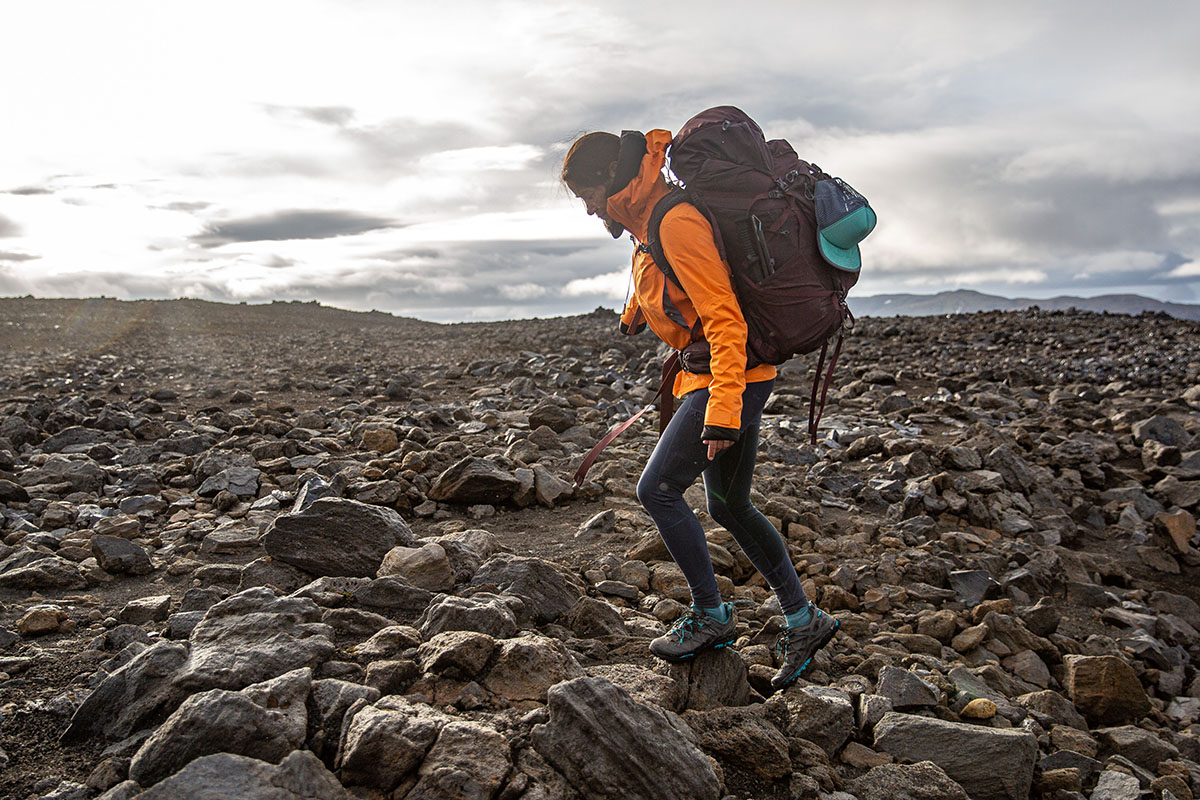
Iceland was rife with snow, rain, and creek crossings, and the Rocket handled it all with aplomb. The Gore-Tex liner worked as expected, providing trustworthy protection from precipitation and shallow bodies of water like puddles and streams. That said, like any hiking shoe, the Rocket is susceptible to moisture pouring in over the collar in deeper bodies of water, and the shoes take a while to dry once submerged. If you typically hike in wetter areas (like the Pacific Northwest), it may be worth upgrading to the Rocket Mid DFS GTX or opting for a non-waterproof shoe that will dry out more quickly. As I mentioned above, the Rocket also runs fairly warm due to the Gore-Tex membrane and laminated upper, which is another reason I wish it were offered in a non-waterproof version (for more on the topic, see our article: Do You Need Waterproof Hiking Shoes?).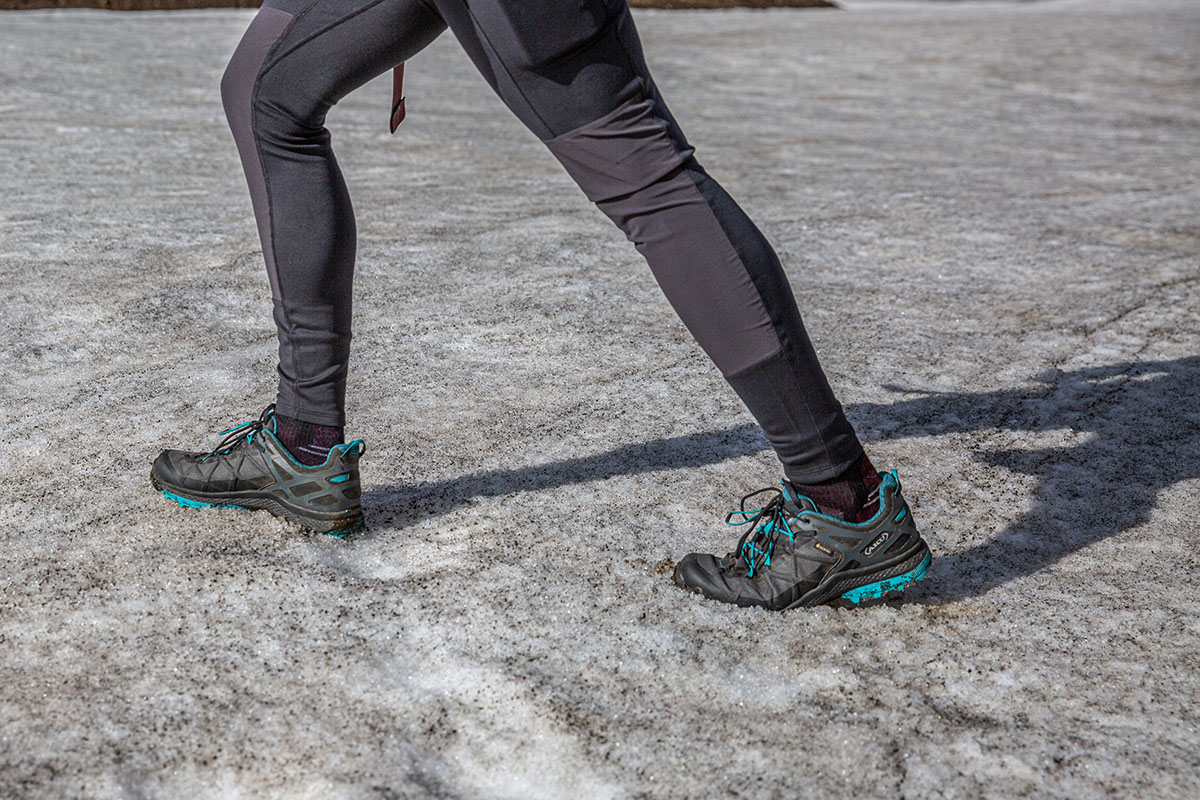
Right away, it was clear that the Aku Rocket DFS GTX is a well-built and hardwearing hiking shoe. Everything about the design exudes quality, from the dual lacing system to the tacky Vibram outsole and well-placed overlays along the upper. You also get a full rubber rand along with solid heel and toe caps, the latter of which has staved off more than a few stubbed toes. And perhaps most telling: After considerable use, the only noticeable wear is some light fraying along the inner cuff of one shoe, which was likely a result of frequent rubbing against sharp volcanic rock. Otherwise, everything is holding up incredibly well.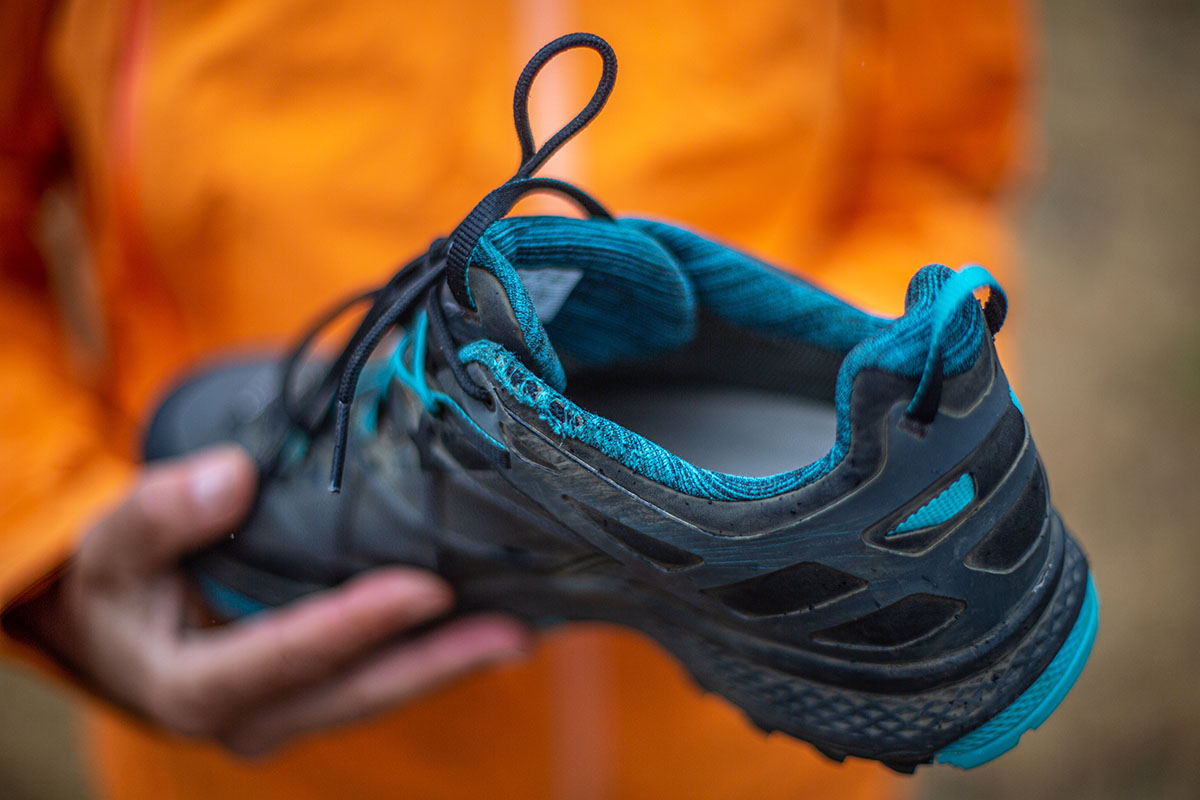
I typically alternate between a women’s size 8.5 and 9 depending on the brand and opted for the latter in the Rockets, which proved to be just about perfect. As I mentioned above, the DFS lacing system allows for easy fit customization, and the snug collar is effective at sealing out debris—unlike my husband’s Scarpa Rush Mid 2 GTX boots he was testing in Iceland, which allowed rocks and dust in at the ankle. The cuffs did cause some pressure and discomfort at the inside of my ankles on off-camber sections of trail, but I quickly got used to the tightness and haven’t experienced any hotspots to date.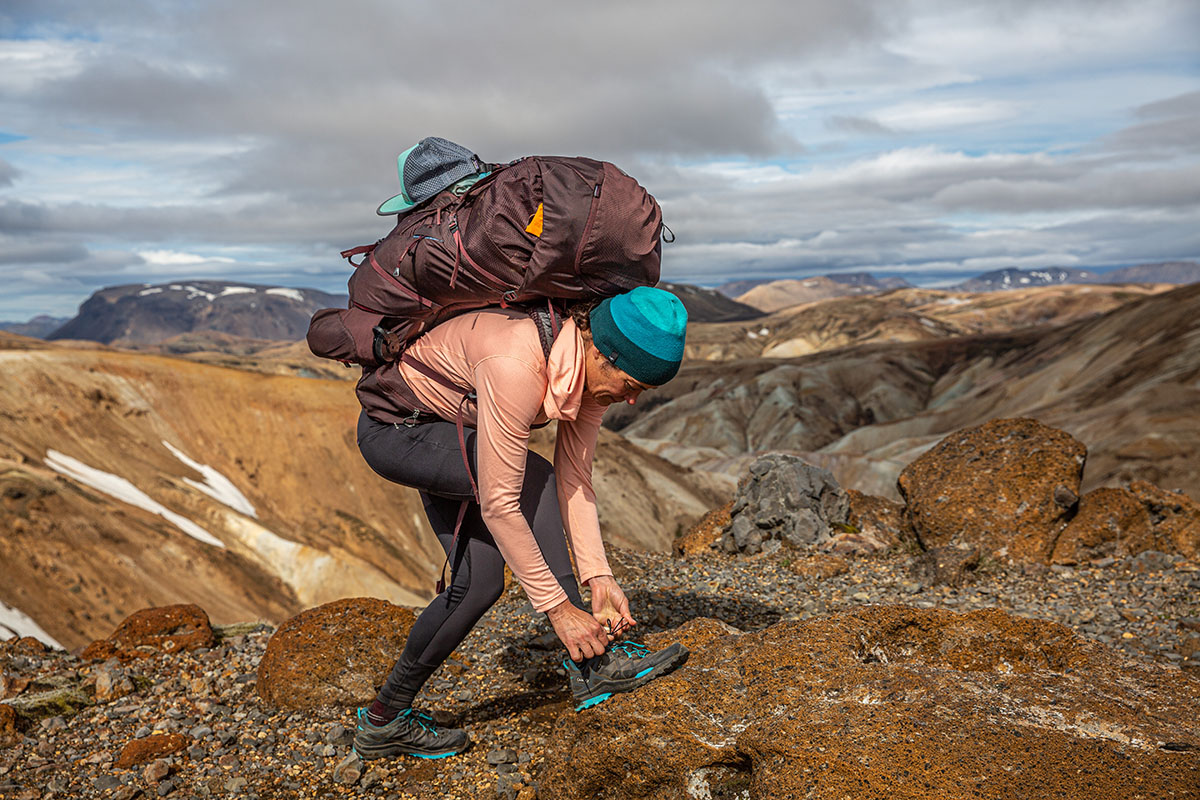
I brought the women’s Rocket DFS GTX to Iceland for testing, and Aku makes the shoe in a men’s version for the same price. Stacked up against the women’s model, the men’s Rocket DFS GTX is slightly heavier at 1 pound 10.1 ounces per pair and sold in different colorways but boasts an identical feature set and overall construction. Rounding out the lineup are mid-height versions for both men and women, which cost $220 and are largely similar to the low-top models but with a sizable boost in coverage and support for a modest weight penalty (the women’s version is 1 lb. 9.4 oz.).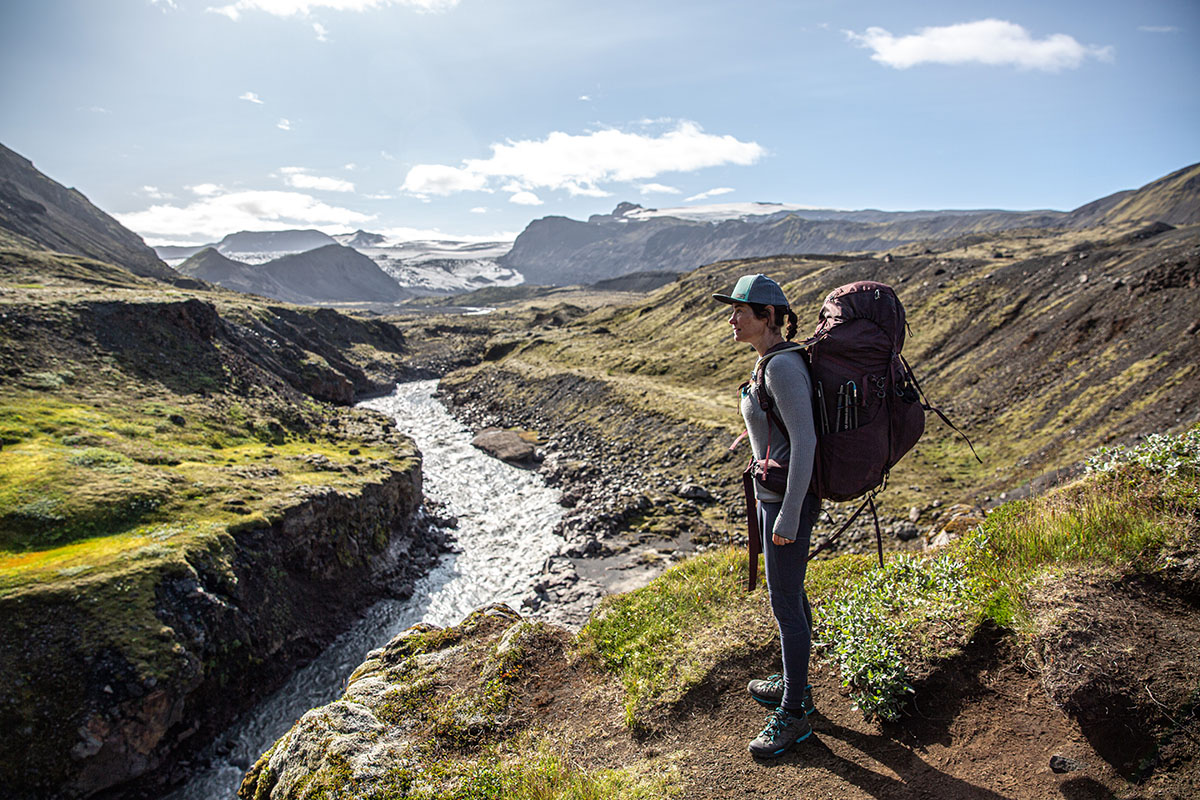
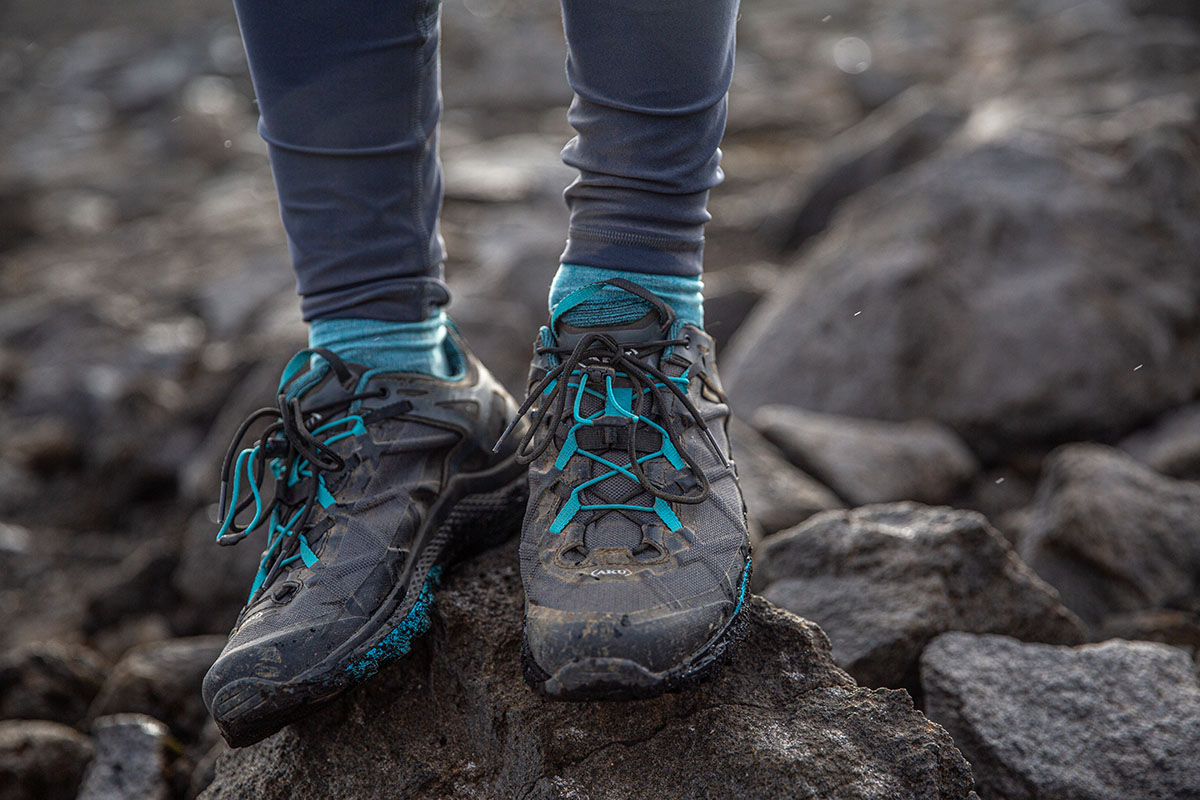
| Shoe | Price | Category | Weight | Waterproof | Upper |
|---|---|---|---|---|---|
| Aku Rocket DFS GTX | $190 | Hiking shoe | 1 lb. 5.9 oz. | Yes (Gore-Tex) | Textile |
| Merrell Moab Speed GTX | $160 | Hiking shoe/trail runner | 1 lb. 3.3 oz. | Yes (Gore-Tex) | Synthetic/mesh |
| La Sportiva Ultra Raptor II GTX | $195 | Trail runner/hiking shoe | 1 lb. 11.8 oz. | Yes (Gore-Tex) | Mesh |
| Salomon X Ultra 4 GTX | $160 | Hiking shoe | 1 lb. 6.1 oz. | Yes (Gore-Tex) | Synthetic |
| Scarpa Rush 2 GTX | $199 | Hiking shoe | 1 lb. 6.2 oz. | Yes (Gore-Tex) | Mesh |
Aku's Rocket DFS GTX offers impressive comfort, traction, and protection in a light and agile package, but it doesn’t come cheap at $190. Our top-rated women’s hiking shoe this year is Merrell’s Moab Speed, which is a modern take on their flagship Moab and costs $30 less than the Rocket (for the Gore-Tex-equipped version; a non-waterproof Moab Speed is available for $130). For traction, both shoes feature Vibram’s latest Traction Lug outsole, but the Aku is grippier overall thanks to the MegaGrip compound (although the Moab is no slouch). The Moab Speed is lighter than the Rocket at 1 pound 3.3 ounces and its collar isn't as stiff—all while remaining fully trail-ready with a durable upper material, solid toe cap, and rock plate underfoot. In the end, most day hikers and occasional backpackers will be fine saving with the well-rounded Merrell Moab Speed, but if you'll be hauling a full pack or prefer a little added stiffness, the Aku gets the edge for us.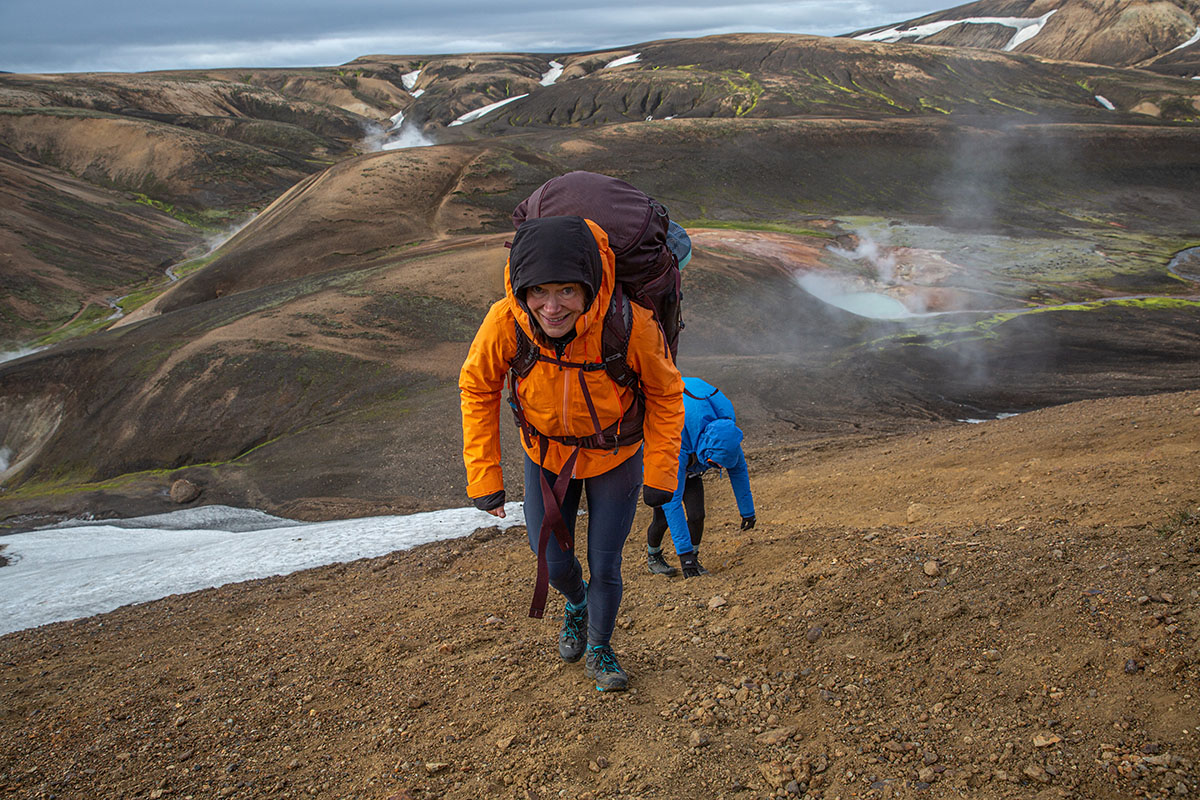
Another capable alternative is La Sportiva’s Ultra Raptor II GTX, which is one of our go-to picks for off-trail scrambling and other above-treeline adventures. Like the Rocket, the Ultra Raptor offers great protection against rocks and roots with generous toe and heel caps and a full-length rock plate, along with a sock-like construction and reliable grip on everything from mud and loose talus to boulders and snow (borrowed from their climbing collection, the Vibram FriXion XF rubber is especially sticky on rock). That said, the Ultra Raptor is considerably heavier at 1 pound 11.8 ounces for the Gore-Tex version with a rather stiff and clunky feel to match, and the rigid TPU heel counter is known to cause discomfort at the heel for some. The mesh upper also has a tendency to absorb moisture, which can make it feel heavy after water crossings. But for peak bagging and other mountain objectives, it’s a step up in technical performance from the Rocket for just $5 more.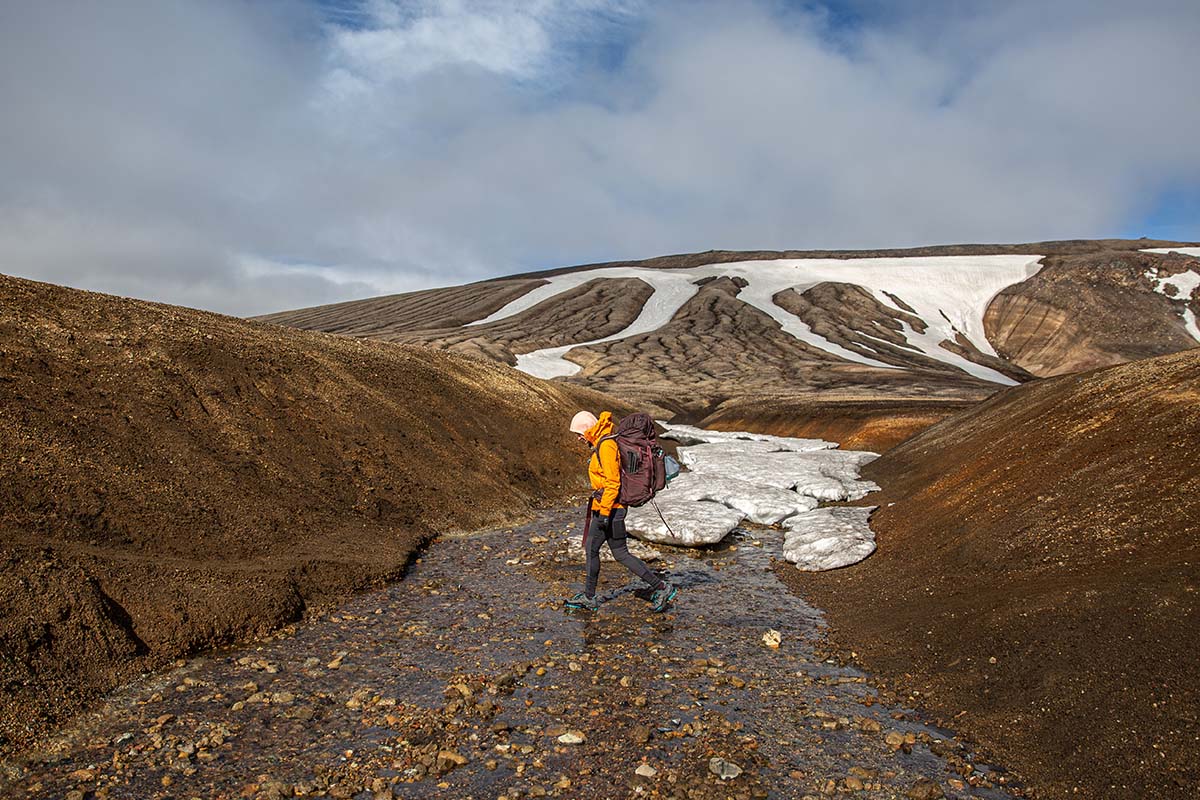
Next up is Salomon’s X Ultra 4 GTX, which has been a longtime favorite thanks to its effective combination of comfort, on-trail performance, and durability for everything from casual day hikes to overnight missions. There’s enough cushioning underfoot for full days with a loaded pack, and the shoe is nimble while still offering stability and protection on par with heavier designs. The Rocket matches it in most ways (including weight), although it’s a step down in breathability with a less ventilated upper. That said, the clincher for some will be fit: In testing the women’s X Ultra 4 (see our in-depth review here), we found it to have a narrow midfoot and spacious forefoot, along with an odd combination of stiffness at the heel and flexibility at the midfoot, which led to sore feet on long days. It’s an impressively well-rounded option if the fit works for you, but if not, the Rocket offers competitive all-around performance for $30 more.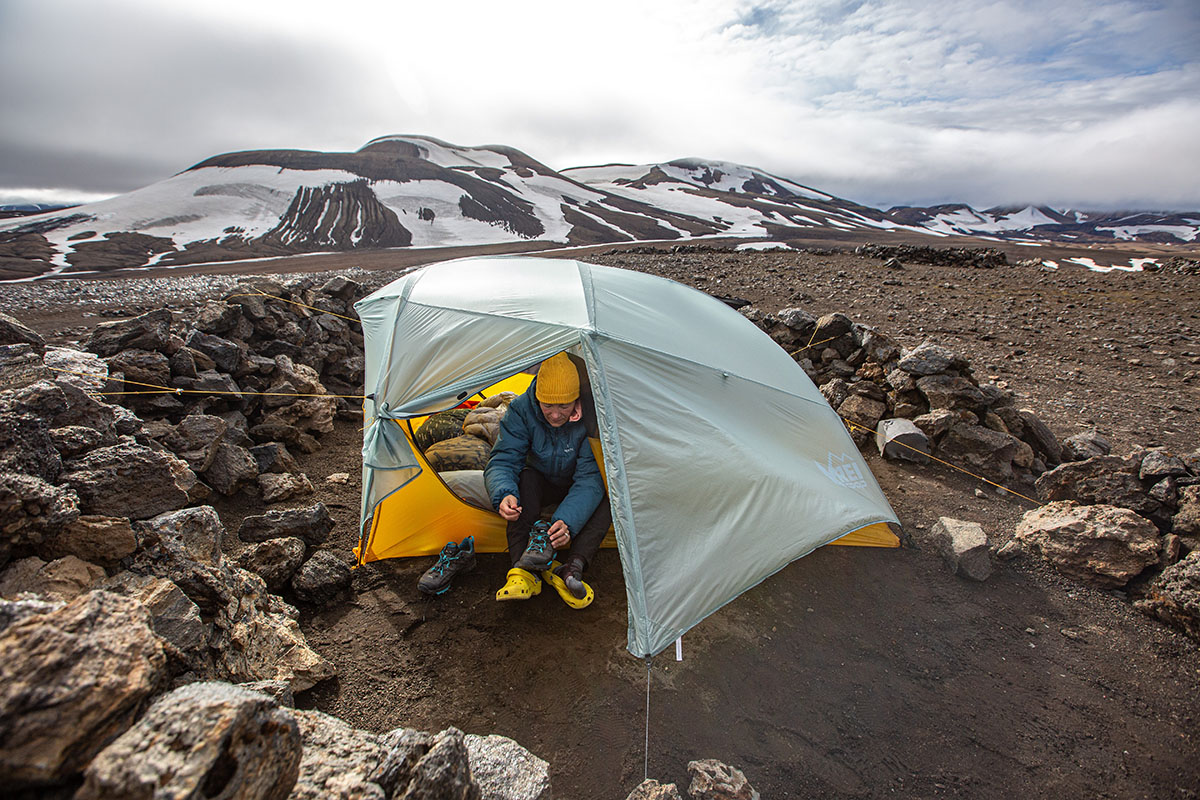
Last but not least is Scarpa’s Rush 2 GTX, which boasts the cushion and rocker of a trail runner alongside the stability and protection of a hiking shoe. For $9 more than the Rocket, the Rush features a similarly durable upper with welded reinforcements, a burly midsole with EVA foam and TPU reinforcements for cushion and stability, and a sticky, rockered outsole that facilitates quick movement on the trail. The Scarpa is also a little more aggressive than the Rocket with lugs that extend over the front of the toe box for added grip on steep slopes. The Scarpa runs a little narrower than the Rocket, although that’s not uncommon among performance-oriented designs and should still work for most feet. All in all, the Scarpa is a proven and purpose-built pick for speed-focused hikers and fastpackers, but the Rocket isn’t far behind and wins out slightly in price, weight, and on-trail comfort.